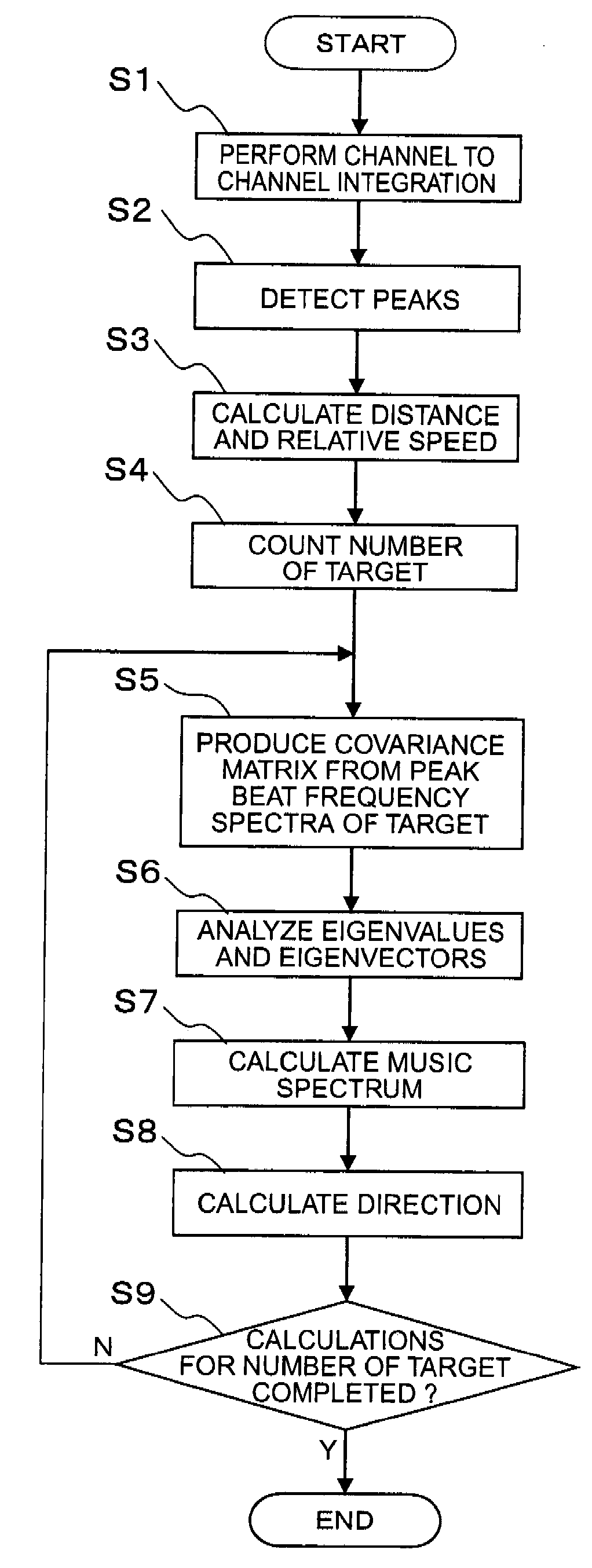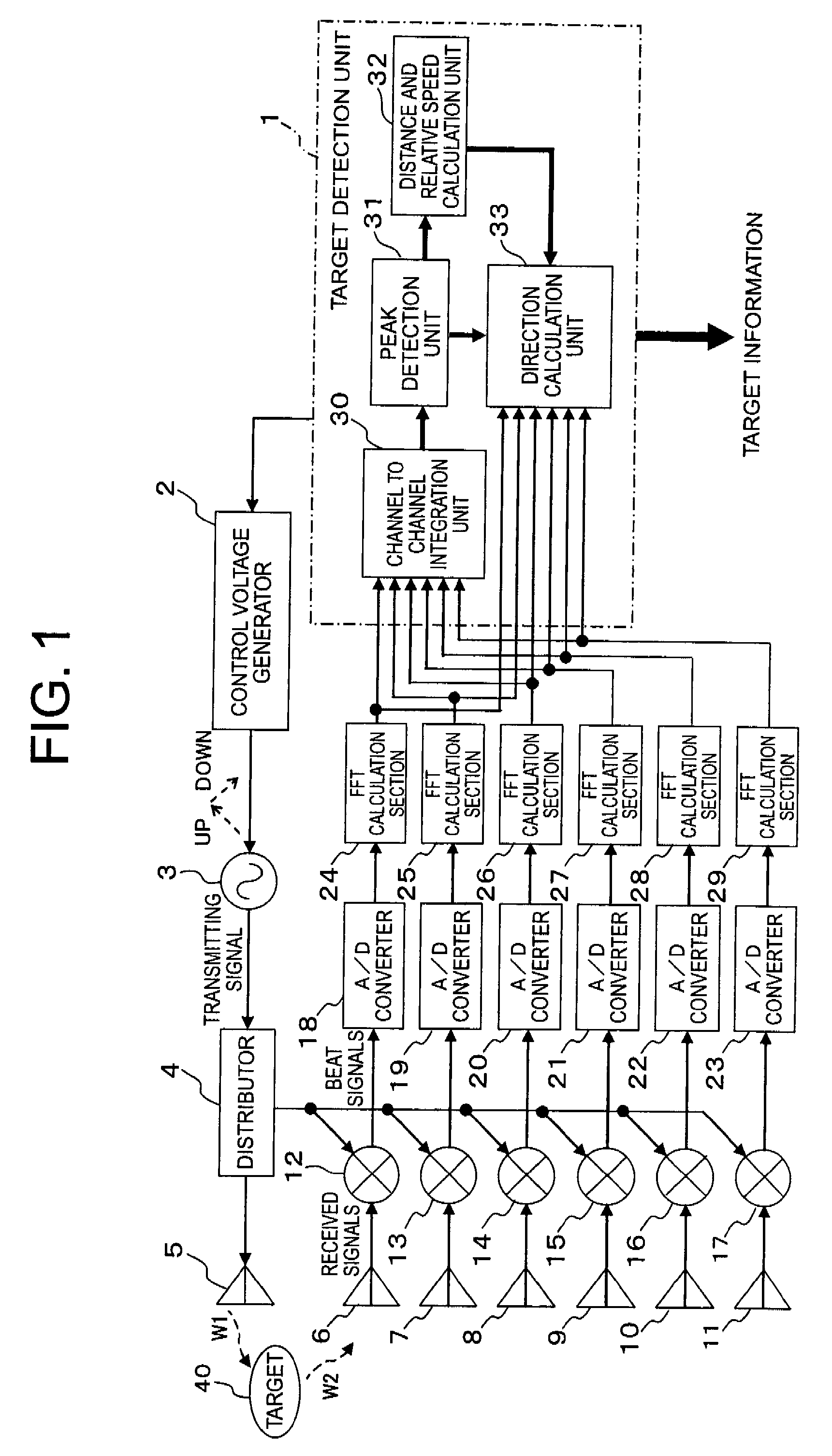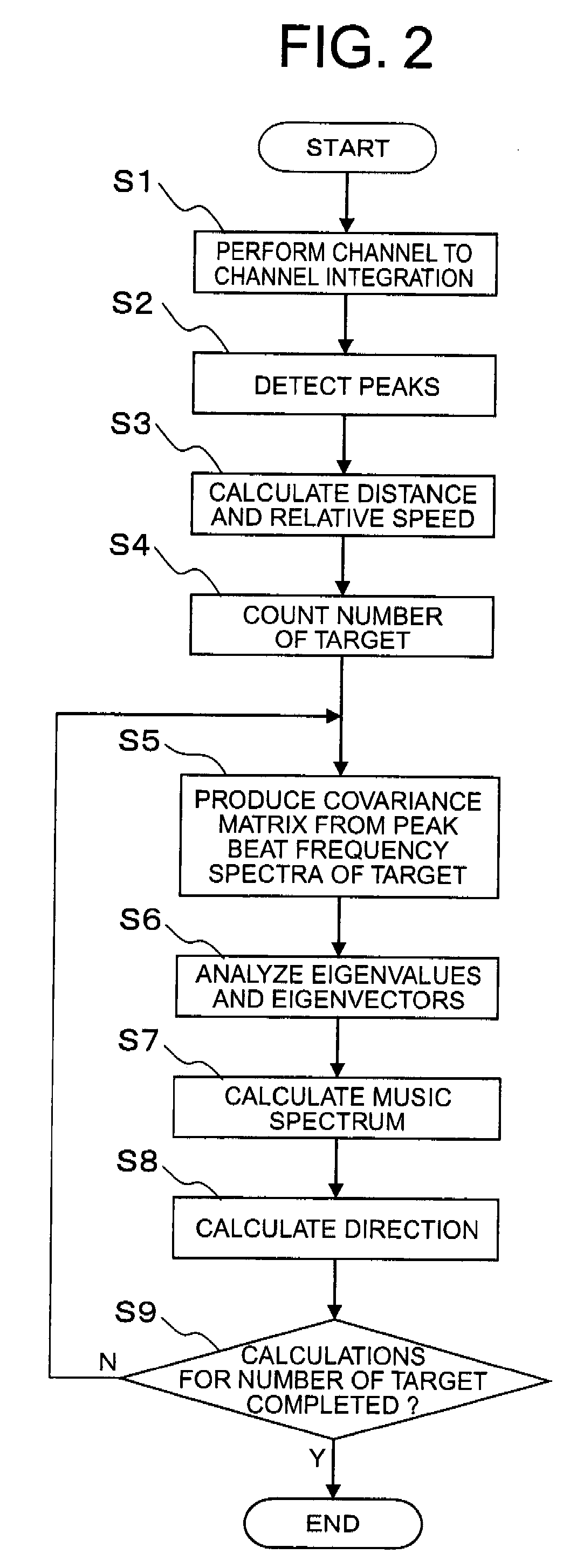Radar apparatus
a technology of radar and antenna, applied in the direction of multi-channel direction-finding systems using radio waves, instruments, measurement devices, etc., can solve the problems of difficult to detect the target peak, the antenna construction has to be changed, and the antenna cannot be detected. the effect of improving the detection performance of the target, high resolution and improving the gain of signals
- Summary
- Abstract
- Description
- Claims
- Application Information
AI Technical Summary
Benefits of technology
Problems solved by technology
Method used
Image
Examples
embodiment 1
[0034]Referring to the drawings and first to FIG. 1, there is shown, in a block diagram, a radar apparatus according to a first embodiment of the present invention.
[0035]In FIG. 1, the radar apparatus includes a target detection unit 1 in the form of a microcomputer, a control voltage generator 2 that outputs a control voltage under the control of the target detection unit 1, a VCO (Voltage Controlled Oscillator) 3 that outputs a transmitting signal with its frequency up / down modulated based on the control voltage, a distributor 4 that distributes a transmitting signal, and a transmitting antenna 5 (transmitting unit) that emits a transmitting signal W1 to a target 40 which may comprise a single target component or a plurality of target components.
[0036]In addition, the radar apparatus further includes a plurality of receiving antennas 6 through 11 (receiving unit) in the form of an array having a plurality of channels (e.g., 6 channels) for receiving a reflection signal W2 which is...
embodiment 2
[0082]In the above-mentioned first embodiment (FIG. 1), the frequency analysis results from the FFT calculators 24 through 29 are directly input to the channel to channel integration unit 30 in the target detection unit 1, they may be input to a sweep to sweep integration processing unit 30 between sweeps as shown in FIG. 5 after through a sweep to sweep integration unit 34.
[0083]FIG. 5 is a block diagram that shows a target detection unit 1A of a radar apparatus according to a second embodiment of the present invention, which is the same in construction as that in the above-mentioned (FIG. 1) except for the additional provision of the sweep to sweep integration unit 34. In addition, the construction of peripheral circuits and the like (not shown) is the same as shown in FIG. 1.
[0084]Now, reference will be made to the operation of the target detection unit 1A according to the second embodiment of the present invention as illustrated in FIG. 5 while referring to a flow chart of FIG. ...
embodiment 3
[0099]Although in the above-mentioned second embodiment (FIG. 5), the sweep to sweep integration unit 34 is inserted at an input side of the channel to channel integration unit 30, it may be inserted at an output side of the channel to channel integration unit 30, so that there is provided the processing of adding, for each of the same beams and at each of the same frequencies, the amplitudes or the electric powers of the beat frequency spectra calculated in a plurality of time ranges after the processing of the channel to channel integration unit 30.
[0100]Hereinafter, reference will be made to a radar apparatus according to a third embodiment of the present invention while referring to an explanatory view in FIG. 4 together with FIG. 8. Here, note that the basic construction of the radar apparatus according to the third embodiment of the present invention is as shown in FIG. 1, and the block construction of a target detection unit 1A is such that the channel to channel integration ...
PUM
 Login to View More
Login to View More Abstract
Description
Claims
Application Information
 Login to View More
Login to View More - R&D
- Intellectual Property
- Life Sciences
- Materials
- Tech Scout
- Unparalleled Data Quality
- Higher Quality Content
- 60% Fewer Hallucinations
Browse by: Latest US Patents, China's latest patents, Technical Efficacy Thesaurus, Application Domain, Technology Topic, Popular Technical Reports.
© 2025 PatSnap. All rights reserved.Legal|Privacy policy|Modern Slavery Act Transparency Statement|Sitemap|About US| Contact US: help@patsnap.com



